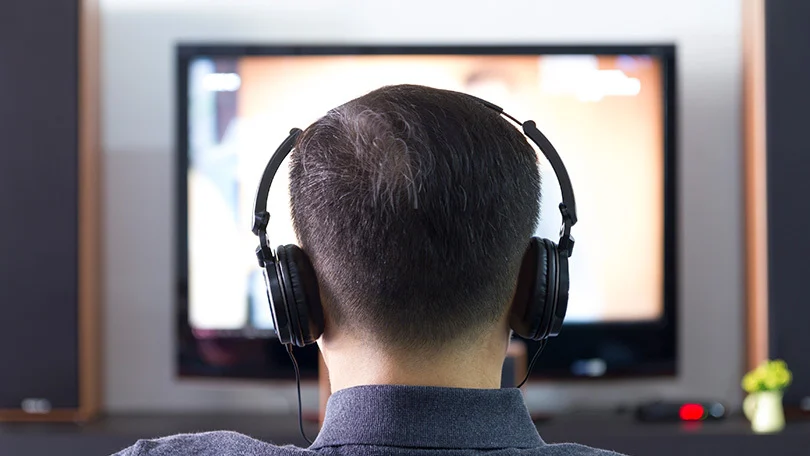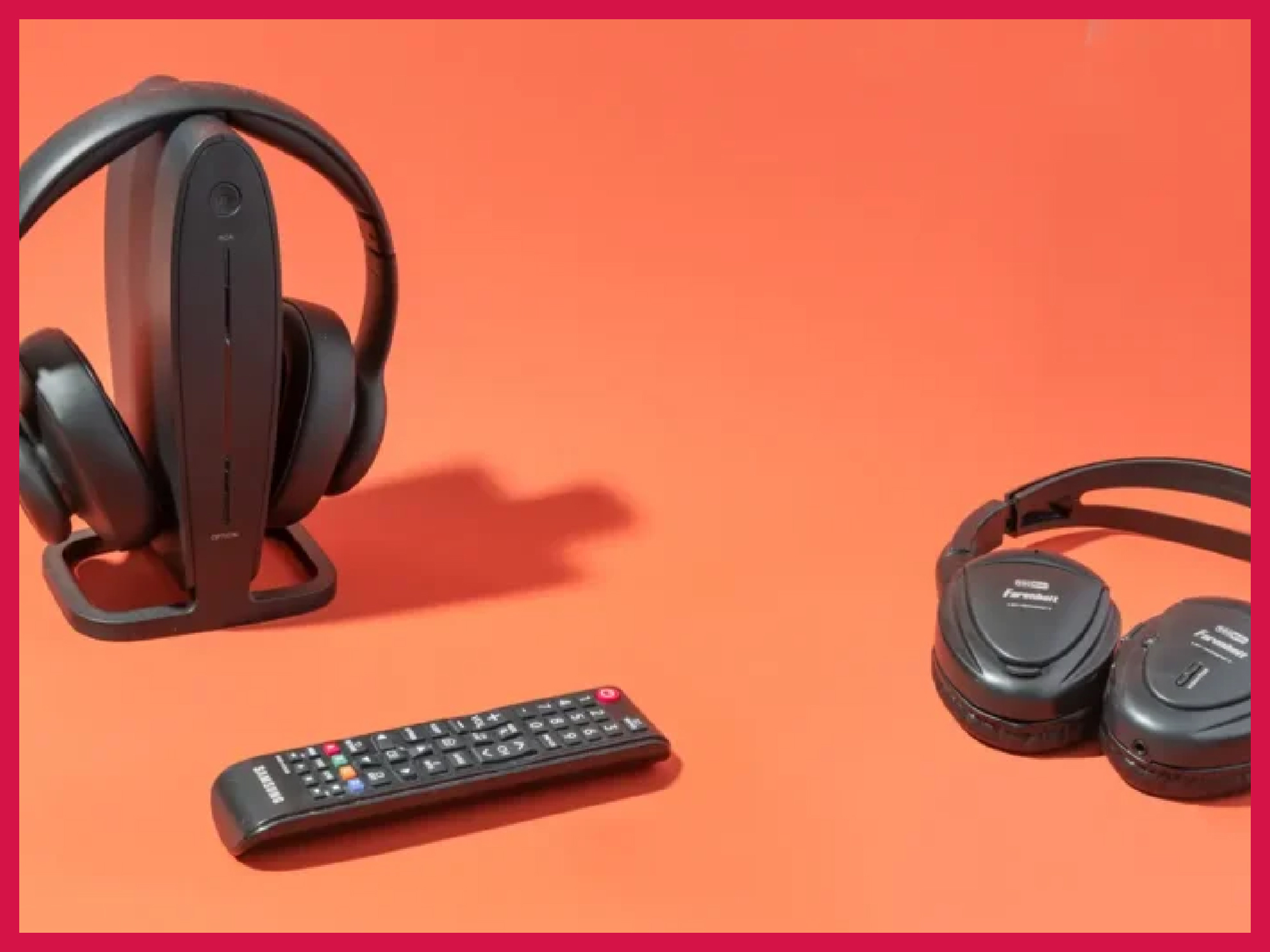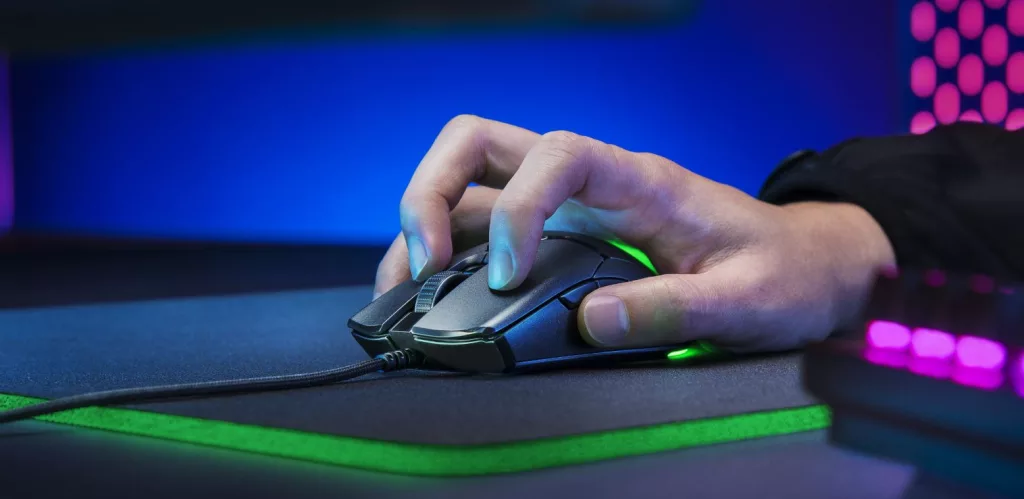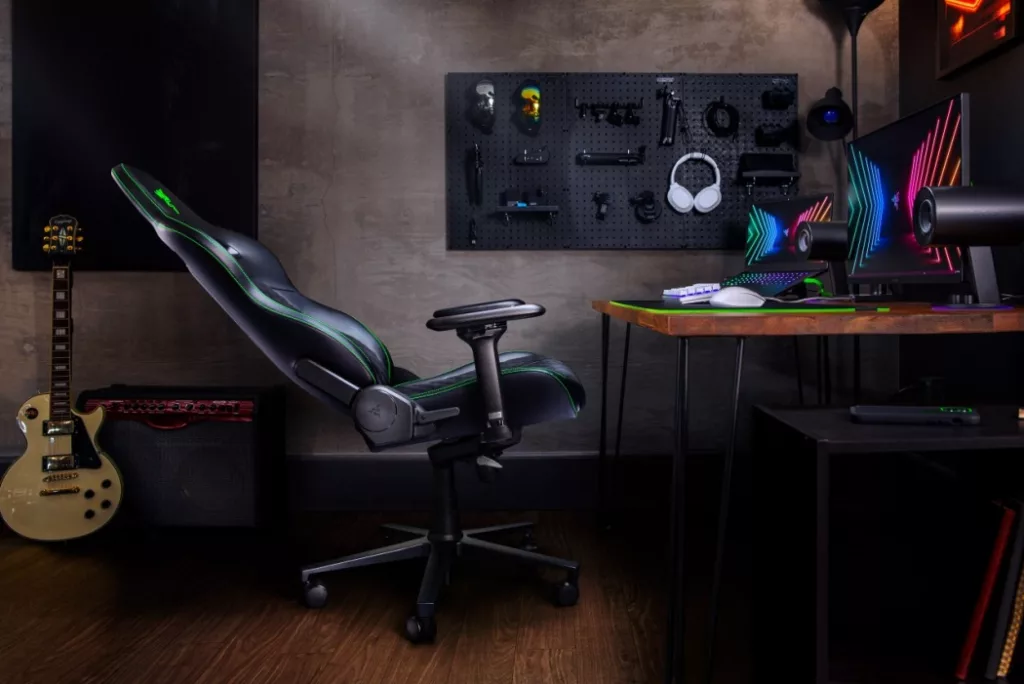Connecting your wireless headphones to the TV can be a pain. But it’s the need of the hour, isn’t it? Watching movies on that large screen is way better than on your laptop. If your TV has Bluetooth, connecting any Bluetooth wireless headphones to it is going to be easy. If your TV doesn’t have it but has USB ports, you’re still in business, albeit you’ll need to make a new purchase.
Let’s find out how to connect wireless headphones to the TV.
But first, how does this whole shebang work for the technologically uninitiated?
How do wireless headphones connect to your TV?

In its essence, a wireless Bluetooth connection to relay audio is built around just a couple of components: a receiver and a transmitter. So far, so good.
The transmitter transmits the signal from the TV and the receiver on the headphone receives it, playing it in the earcups (duh).
Depending on the distance and the transmitter’s power, audio might get choppy or laggy as the connection between the two components becomes weak.
A wireless headphone will always pack a receiver. That’s pretty much the entire job description it has, so it’s better. A TV, on the other hand, might not be a Bluetooth transmitter. In simpler terms, your TV might not be equipped with Bluetooth technology at all.
If your TV indeed has a Bluetooth transmitter built-in, you’re in the clear. So, let’s talk about this scenario first before we discuss what to do if the TV doesn’t have it.
Not sure whether you have Bluetooth on your TV or not?
I understand, not everyone pays attention to the specs. If you have the product handbook or the model name and number handy, it’s fairly easy to know about the device’s Bluetooth availability. The handbook will talk about the Bluetooth feature or the model number, you can do a Google search to find out whether it has the tech or not.
Also, if your TV came with a smart remote, then it definitely has Bluetooth because smart remotes work over Bluetooth, not infrared. Also, you can access the on-screen display (OSD) settings of the TV from whatever remote you have to find out whether you have Bluetooth or not.
Usually, you’ll find the mention of Bluetooth in Settings > Sound > Sound Output. Many TVs that support Bluetooth will have a Bluetooth devices list.
Products branded as “smart TVs” also most likely have Bluetooth.
Connect Bluetooth headphones to a TV that has built-in Bluetooth
So, if your TV does have support for wireless connections, how to pair your headphones? Simply put, how to connect wireless headphones to a TV when it has Bluetooth?
- Put your headphones in pairing mode. Usually, the pairing mode is turned on by pressing and holding the Bluetooth or power button on the headphones. This is indicated either by a sound or by a blinking light (or both).
- Turn the Bluetooth on in the TV’s settings via the remote. Different manufacturers have different methods to turn it on, while many have it set to always-on by default. In most cases, accessing the TV’s settings, going to sound options, and choosing “sound out”, “device selection”, “Bluetooth”, “remote”, “accessories”, or a similar option will do the trick.
- Once you’ve turned the TV’s Bluetooth on, it’ll automatically enter the searching mode. As long as this searching mode is on and the headphone’s pairing mode is on, both can find each other like lost love after three winters (not four though, she completely forgot about me in 4 years).
- After the search, you should see a list of devices ready to be connected. If your headphone’s name doesn’t show up, try restarting the headphones and entering the pairing mode again. Resetting the headphones might be required, for which we have a separate guide.
- Once the device shows up, connect to it. There might or might not be auditory confirmation.
Connect your wireless headphones to a TV that doesn’t have Bluetooth built-in

Now, this is no picnic. If your TV doesn’t come with Bluetooth, you’re in for some work.
TVs with 3.5mm ports
Most TVs come with at least one 3.5mm port. You need to get yourself a Bluetooth transmitter that has a 3.5mm jack. You’ll find plenty online or on the market. Connecting one to your PC’s 3.5mm port will make sure your TV can find and connect to Bluetooth devices including your wireless headphones.
The TV will relay the sound output to the transmitter instead of the default speakers. In turn, the transmitter will relay the output to any connected Bluetooth device. The pairing between a transmitter and wireless headphones follows the typical course of any Bluetooth connection. If you’ve previously connected a Bluetooth device to anything else (like your smartphone, for example), you’ll be familiar with the steps to take.
No matter which vendor you go with, the steps will pretty much follow the same route:
- Turn on pairing mode on the Bluetooth transmitter while connected to the TV.
- Turn on pairing mode on the wireless headphone too.
- Wait for a connection to be established – whether it’s an audio confirmation or LED blink depends on the brand and make.
Other adapters
The 3.5mm port is the most common on TVs, it’s not hard to find (sometimes older) TVs that don’t have it. Here’s a list of other adapters that might be present on your TV:
- HDMI: This is the best method and easy enough.
- USB: USBs are amazing and there are plenty of reliable USB-jack Bluetooth adapters out there.
- RCA jacks: These are older technology, but still, something we can work with.
- Only optical TOSLINK output: Boy, it’s going to be a hard day’s night.
Once you’ve determined what ports your TV has, you can find a suitable adapter to get Bluetooth working on it. Let’s start with the hardest.
If your TV only has optical TOSLINK, you need to buy a digital to analog audio converter, typically called a DAC. Many good ones come for around $15. A DAC will plug into your old TV and provide 3.5mm ports for a 3.5mm Bluetooth transmitter to connect to it (which you’ll need to buy separately).
With that out of the way, let’s look at a couple of simpler options.
If your TV has either RCA jacks or USB ports, you’ll find yourself with plenty of options. Many Bluetooth adapters for USB out there. For RCA too.
Do you also have a media streamer?
Perhaps your TV works while connected to a set-top box? Or a media streamer of some other type? These media streamers have their own sound output choices. If you have a modern set-top box like the Amazon Fire TV Cube, it’s very easy to connect to a Bluetooth device as it comes preinstalled with Bluetooth.
All you need to do is navigate to the media streamer’s settings (with the remote you got with it) and choose Bluetooth devices.
If your media streamer doesn’t have Bluetooth built-in, it might have ports just like most modern TVs do. See if it has a 3.5mm, RCA, USB, or HDMI port. All of these ports can be used to connect to a Bluetooth device after you plug an adapter or transmitter into one of them.
Some other media streamers that come with Bluetooth built-in are Sling AirTV 4K, Nvidia Shield TV, Xiaomi Mi Box, Apple TV 4K, and Roku. All of these media streamers have different ways to find and pair Bluetooth devices. Here’s how (first make sure the pairing mode is also on your Bluetooth headphones for the processes to work):
- Sling AirTV 4K:
- Press and hold the remote button present on the top of your AirTV player.
- The pairing screen will come up.
- “Searching for accessories” will display.
- A list of devices will be shown.
- Follow the on-screen instructions to connect to your wireless headphones.
- Nvidia Shield TV:
- Open up the Shield TV’s menu.
- Choose “Wireless and Networks/Connected Devices”.
- Switch it on if it’s off and wait.
- After a brief search time, your device will appear.
- Select the device and wait for pairing to successfully finish.
- Xiaomi Mi Box:
- Launch the Mi Box service menu.
- Go to “Remote & accessories”.
- Select “Add accessory”.
- Follow the instructions to successfully discover and connect to the wireless headphones.
- Apple TV 4K:
- Go to the Apple TV home screen.
- Open Settings.
- Select “Remotes and Devices”.
- Choose “Bluetooth”.
- Apple TV will search for available Bluetooth devices.
- Select the headphones from the list.
- Wait for the pairing to finish successfully.
- Roku:
- You need the Roku app on your iOS or Android device.
- Connect both the device and the Roku media streamer to the same WiFi network.
- On your phone or tablet, you’ll be able to scan and pair for Bluetooth devices. Choose the headphones from the list and pair them.
- Now, open the Roku app and select the “Remote” tab.
- You’ll be able to activate the Bluetooth pairing to your headphone through the phone or tablet.
- In the Roku app, you’ll see a headset icon. Select that and your headphones will start working.
- Note that because Roku establishes the connection from the streamer to the phone and then from the phone to the headphone, this transmission can make an audio delay, especially if multiple other devices are connected to the same WiFi.
Dedicated wireless TV headphones

A wireless headphone meant for TVs comes with its own base station (also known as a transmitter stand). This base station acts as a Bluetooth transmitter, so you don’t need another one. All you need to do is connect the base station to the TV.
How do these base stations connect to your TV? Doesn’t that sort of bringing us to the original problem of your TV not having Bluetooth?
Nope.
Base stations that come with dedicated wireless TV headphones have multiple connection options including 3.5mm jacks and RCA connectors.
These base stations, in turn, connect to their respective headphones via a number of technologies. There’s Bluetooth, sure, but there are other options as well to choose from. Radio Frequency (RF) and Infrared (IR) are the most common. Which headphones you go for between Bluetooth, RF, and IR depends on your particular needs. Here’s a lowdown on all three:
In comparison to a Bluetooth connection, your experience will be slightly poor with RF. RF is prone to noise interference if other RF devices are in the same vicinity. Not to mention RF headphones cannot be used for other purposes. However, RF has a higher transmission speed than Bluetooth. IF is a wholly different beast altogether. IF works on a line-of-sight data transmission principle. It means that if there’s some obstacle between the TV and the headphones, the connection will be lost. IF headphones will also produce a lot of noise if the receiver is close to any device connected to WiFi. The simple fact that you need to be directly in front of the TV to be able to listen to the TV’s sound puts many off.
Different RF and IF headphones have different effective ranges (reception) and need batteries to work or recharge (recharging is simple, you just need to put the headphones on the stand in most cases). IF headphones are preferred by people who are hard of hearing.
In terms of connection stability, Bluetooth is by far the most reliable of the bunch. RF beats both Bluetooth and IF in terms of range and ease of setting it up. IF, on the other hand, provides unmatched audio clarity but has a short, direct-line range.





